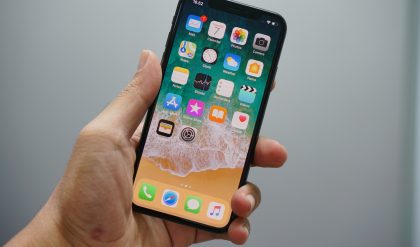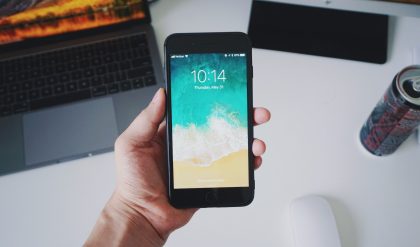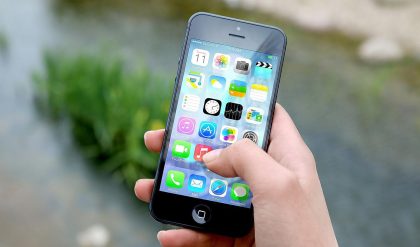
In recent years, the concept of jailbreaking an iPad has become increasingly popular. The practice of jailbreaking is not endorsed or approved of by Apple, however, it remains a popular choice for users seeking to improve their device’s capabilities beyond the limitations of the operating system of the iPad. With this increased interest comes an important question that we aim to address in this article: Does Jailbreaking Make iPad Slower?
For those who are not so tech-savvy, jailbreaking means freeing an iPad from the limitations set by its operating system. This allows a range of modifications and tweaks not typically supported by Apple.
Thanks to these changes, users are now able to do things like customize the user interface, download unauthorized applications, or enhance the iPad’s functionality in different ways.
The Technical Process of Jailbreaking
Now that we have scratched the surface of jailbreaking, it’s time to dive deeper into the technicality behind it.
How Jailbreaking Works
Jailbreaking is essentially a way of unlocking your iPad’s operating system. It involves exploiting vulnerabilities or weaknesses in the iOS system to get access to administrative privileges which are typically restricted by Apple to ensure the device’s stability and security.
Apple’s iOS works as a guard for your iPad’s software and sets the framework for what is allowed and what is not on the device. Jailbreaking is essentially a way to break free from this framework an get access to the device’s file system and settings, giving you much greater freedom.
Popular Tools and Methods for Jailbreaking
There are several ways and approaches to jailbreaking an iPad and the methods have evolved over the years.
Some of the most common jailbreaking methods include tools like unc0ver, Checkra1n, and Electra which are designed to work with specific iOS versions and device models.
The process usually involves connecting your iPad to a computer, running the jailbreaking tool, and following on-screen instructions. It’s important to note that the availability and success of jailbreaking methods may vary depending on your iOS version and device model. Therefore, it’s important to do proper research before you begin.
Risks and Precautions During the Jailbreaking Process
While jailbreaking offers many benefits, it’s not without its risks. Some of these include the potential for data loss, system instability, and even the dreaded “bricking” of your device. Bricking means rendering your iPad unusable, similar to turning it into a lifeless brick.
To avoid these risks, it’s important to follow jailbreaking instructions carefully, ensure your device is compatible with the chosen method, and back up your data beforehand. It’s also wise to stay up to date with the latest developments in the jailbreaking community as methods and tools are continually evolving.
Performance Impact of Jailbreaking
Now that we’ve explored the technicalities of jailbreaking, let’s dive into the most important question of this article: What happens to your iPad’s performance once it’s been jailbroken?
Potential Consequences of Jailbreaking on iPad Performance
- System Stability: One of the primary concerns with jailbreaking is its impact on the stability of your iPad’s operating system. By bypassing Apple’s carefully curated security measures, you open the door to the installation of third-party apps and system modifications that haven’t undergone the same rigorous testing as Apple’s official software. This can result in system crashes, freezes, and a generally less stable user experience.
- Battery Life: Jailbreaking may also affect your iPad’s battery life. Some jailbreak tweaks and modifications run in the background, consuming additional power and potentially reducing the time your device can go between charges. This can be especially frustrating if you rely on your iPad for extended periods without access to a charger.
- Speed and Responsiveness: While jailbreaking can unlock features and customization options, it’s not uncommon for it to introduce a subtle slowdown in performance. This can manifest as slightly longer app load times, delays in system responsiveness, or occasional lags during multitasking. The extent of these performance impacts can vary depending on the tweaks and modifications you install.
Factors That Can Influence Performance Changes
Understanding the nuances of performance changes post-jailbreaking requires considering several factors:
- Installed Tweaks and Modifications: The specific tweaks and modifications you install play a pivotal role in determining the performance impact. Some tweaks are well-optimized and have a minimal effect on performance, while others can be resource-intensive.
- Firmware and iOS Versions: The iOS version running on your iPad and the corresponding jailbreaking method used can affect performance outcomes. Compatibility between tweaks and the iOS version can vary, leading to varying levels of optimization and stability.
Security and Privacy Concerns
While jailbreaking can open the door to a world of features and customization opportunities, it also exposes your iPad to certain vulnerabilities that warrant thoughtful consideration.
Risks Associated with Jailbreaking and Its Impact on Security
Jailbreaking inherently weakens the robust security architecture that Apple has constructed around its iOS ecosystem. By bypassing Apple’s safeguards, you create a device that malicious software or unauthorized apps have a more significant opportunity to infiltrate your device. This can potentially expose your personal data, including sensitive information like passwords and financial details, to security threats.
Also, jailbroken devices often lose the benefits of Apple’s prompt security updates. Bear in mind that Apple regularly releases patches to address newly discovered vulnerabilities. In contrast, jailbroken devices may lag behind in updating their security which leaves them more susceptible to known exploits.
Potential Vulnerabilities and Threats
Jailbreaking can introduce several vulnerabilities and threats to your iPad:
- Malware and Unauthorized Apps: The ability to download apps from unofficial sources means you could inadvertently install malware or apps that haven’t undergone Apple’s rigorous security screening.
- Reduced Sandboxing: Apple’s iOS relies on a concept called sandboxing, which limits the access each app has to system resources. Jailbreaking can erode this protection, potentially allowing malicious apps to interfere with your device’s core functionality.
- Data Exposure: A compromised system could expose your personal data, from emails to contact lists, to malicious actors.
- Incompatibility with Security Measures: Some security features, like Apple’s Find My iPhone, may not function correctly on jailbroken devices, potentially compromising your ability to recover a lost or stolen iPad.
The Importance of Keeping the iPad Secure After Jailbreaking
Understanding these risks is important, but it’s equally vital to take proactive measures to secure your jailbroken iPad. This includes:
- Using Reputable Sources: Limit your downloads to trusted repositories within the jailbreaking community to minimize the risk of installing malicious software.
- Regularly Updating: Stay informed about security updates released by the jailbreaking community and promptly apply them to maintain the best possible security posture.
- Consider Reverting: If you find that the security and privacy risks outweigh the benefits of jailbreaking, it’s possible to revert your iPad to its factory settings, thereby eliminating the vulnerabilities introduced during the jailbreaking process.
Benefits of Jailbreaking
Whilst jailbreaking your iPad comes with risks, there are of course many benefits of jailbreaking your device – which explains why it is so popular. Let’s take a closer look at these benefits and how they can enhance your iPad experience.
Highlighting the Positive Aspects of Jailbreaking
- Customization Options: Jailbreaking provides a canvas for personalizing your iPad in ways unimaginable within Apple’s stock iOS. You can change your device’s appearance, from themes and icons to custom gestures and animations. This level of customization allows you to truly make your iPad your own.
- Access to Unofficial Apps and Tweaks: Jailbreaking unlocks access to an array of third-party apps and tweaks unavailable on the App Store. These can include apps that modify system behavior, enhance productivity, or provide novel functionalities that can significantly improve your daily workflow.
Balancing the Advantages Against Potential Drawbacks
While the benefits of jailbreaking are compelling, it’s crucial to maintain a balanced perspective:
- Considered Risk: Every customization and modification comes with a level of risk, particularly in terms of security and stability. It’s essential to weigh the advantages against the potential drawbacks and exercise caution when experimenting with non-standard software.
- Updates and Compatibility: Frequent iOS updates from Apple may render some jailbreak tweaks incompatible, necessitating a choice between staying with your existing setup or forgoing updates.
- User Expertise: Successfully harnessing the power of jailbreaking often requires a degree of technical know-how. Novice users might encounter challenges during the process or troubleshooting issues.
Whether or not you should jailbreak your iPad comes down to a question of priorities and how eager you are to explore all the possibilities beyond Apple’s tightly controlled ecosystem.
Is Jailbreaking Worth It?
Now that we’ve explored jailbreaking and its pros and cons, we come to this central question: Is jailbreaking worth it?
Weighing the Pros and Cons
- Advantages: Jailbreaking grants you the freedom to customize your iPad to a degree that is simply unattainable within Apple’s standard iOS framework. Access to third-party apps and tweaks can greatly enhance functionality and personalization.
- Drawbacks: On the flip side, jailbreaking introduces security and stability risks. The potential for system crashes, battery drain, and data exposure cannot be ignored. Additionally, the need to stay informed about updates and compatibility can be a significant commitment.
Considerations for Different User Types
- Casual Users: If you primarily use your iPad for standard tasks like web browsing, email, and entertainment, the benefits of jailbreaking may not outweigh the potential hassles and risks. A non-jailbroken iPad is generally more straightforward and less prone to complications.
- Advanced Users: Tech-savvy individuals who relish the prospect of customization and are willing to invest time in understanding the intricacies of jailbreaking may find it worthwhile. However, they must be prepared for the responsibilities it entails, including regular maintenance and troubleshooting.
Alternatives to Jailbreaking for Achieving Customization and Additional Features
Jailbreaking is not the only route to expanding your iPad’s capabilities. There are alternative avenues to explore:
- App Store Apps: The App Store offers a vast array of applications that can mimic some of the functionalities provided by jailbreak tweaks. While they may not provide the same level of customization, they often come with enhanced security and compatibility.
- iOS Updates: Apple regularly introduces new features and improvements with iOS updates. Staying up-to-date with the latest official iOS releases can provide additional functionality and security enhancements.
- External Accessories: Consider exploring external hardware or accessories that can augment your iPad’s capabilities, such as keyboard attachments or stylus pens.
How to Safely Jailbreak an iPad
For those who have decided to jailbreak their iPad, understanding how to do it safely is very important. Below is a step-by-step guide to minimize risks and ensure a smooth process:
Step-by-Step Guide for Those Interested in Jailbreaking
- Backup Your iPad: Before diving into jailbreaking, ensure all your data is safely backed up. Use iCloud or iTunes to create a complete backup, safeguarding your important files, apps, and settings.
- Choose the Right Jailbreaking Tool: Research and select a reputable jailbreaking tool that is compatible with your iPad’s iOS version and model. Popular tools like unc0ver, Checkra1n, or Electra are often recommended by the jailbreaking community.
- Prepare Your Computer: Ensure your computer is up to date and has the necessary software installed to run the chosen jailbreaking tool. Most jailbreaking processes require a computer with macOS or Windows.
- Disable Passcode and Find My iPhone: In your iPad’s settings, disable any passcodes and turn off Find My iPhone to prevent complications during the jailbreaking process.
- Connect Your iPad: Use a USB cable to connect your iPad to your computer. Ensure a stable internet connection and disable any security software that might interfere with the jailbreaking process.
- Run the Jailbreaking Tool: Launch the chosen jailbreaking tool on your computer and follow the on-screen instructions. This usually involves a series of simple steps, such as clicking buttons to start the jailbreak.
- Wait Patiently: The jailbreaking process may take some time. Be patient and avoid interrupting it. Your iPad will restart several times during the procedure.
- Install Cydia or Sileo: Once the jailbreaking process is complete, you will typically have access to either Cydia or Sileo, which are alternative app stores for jailbroken devices. These stores allow you to browse and install third-party apps, tweaks, and modifications.
- Install Tweaks and Modifications: Explore the available tweaks and modifications, but exercise caution. Not all tweaks are created equal, and some may negatively impact your iPad’s performance or stability. Start with well-known and trusted sources.
Precautions to Minimize Risks
- Stay Informed: Keep abreast of the latest news and updates in the jailbreaking community. This includes security updates and compatibility information for your specific iOS version.
- Backup Regularly: Continue to back up your iPad regularly to safeguard your data. This will prove invaluable in case you encounter issues or need to restore your device.
- Avoid Pirated Software: Refrain from installing pirated apps or tweaks, as they can introduce security risks and compromise the integrity of your device.
- Use Reputable Repositories: Stick to trusted repositories when downloading tweaks and modifications. These sources are more likely to offer well-vetted and secure software.







